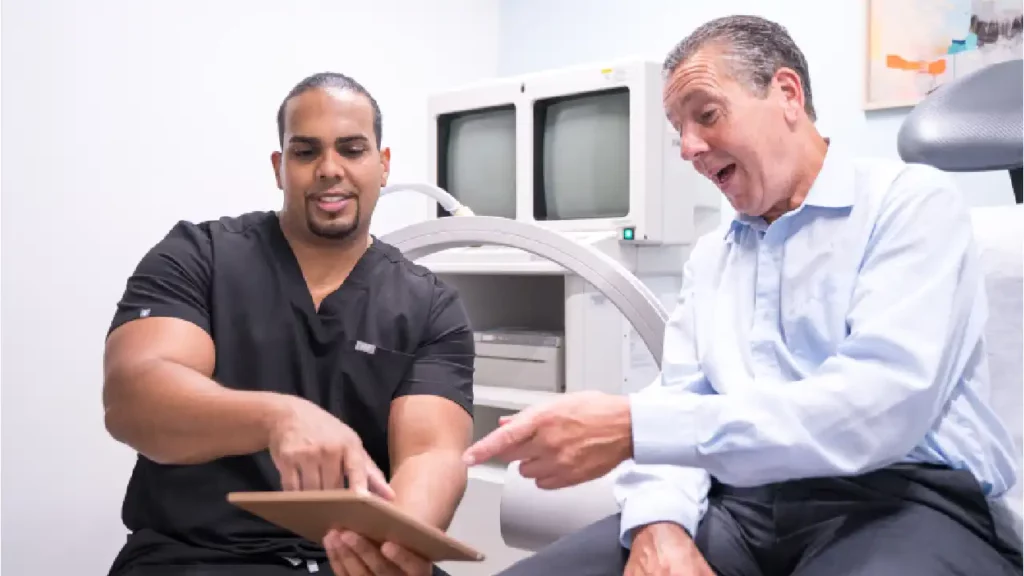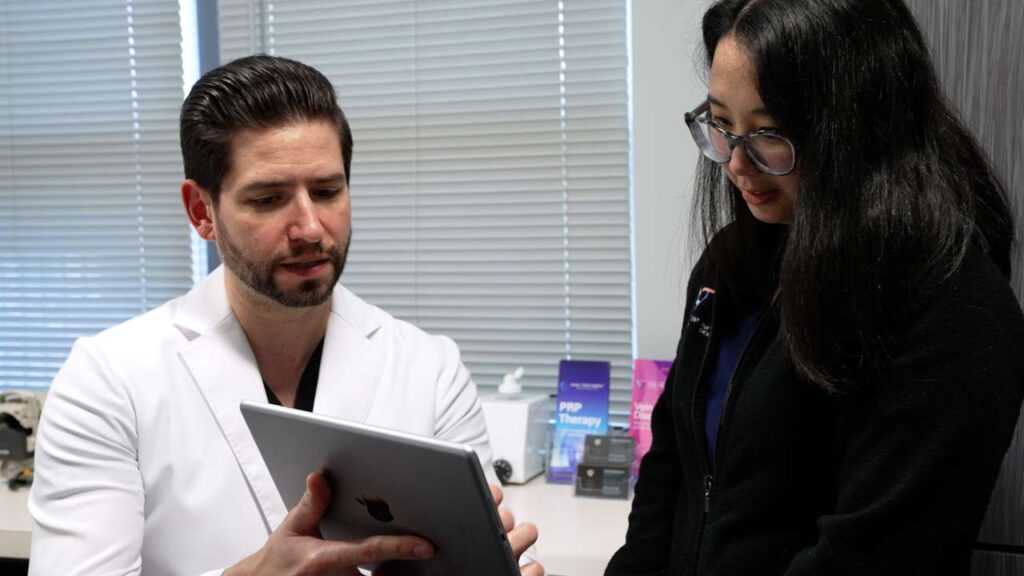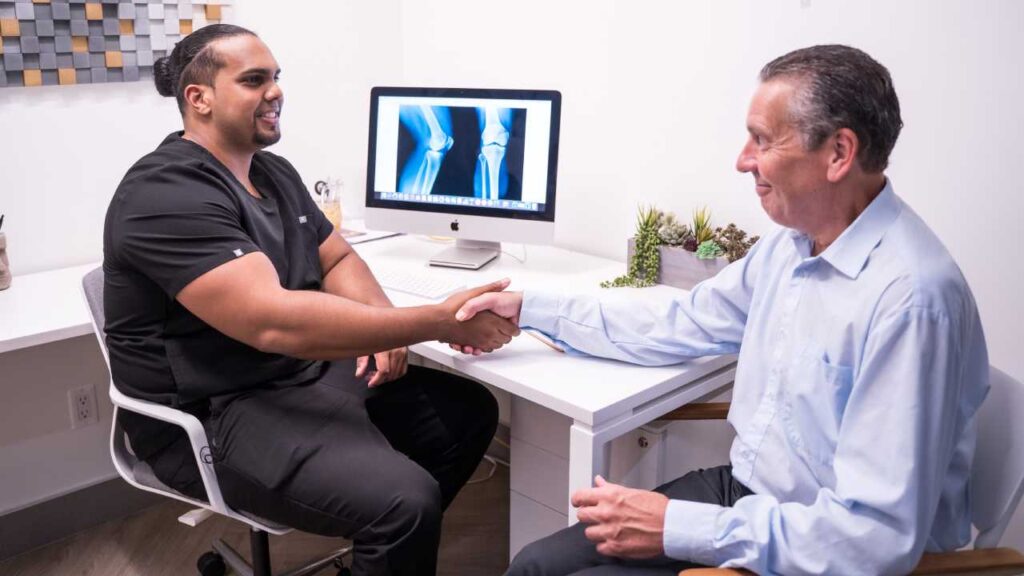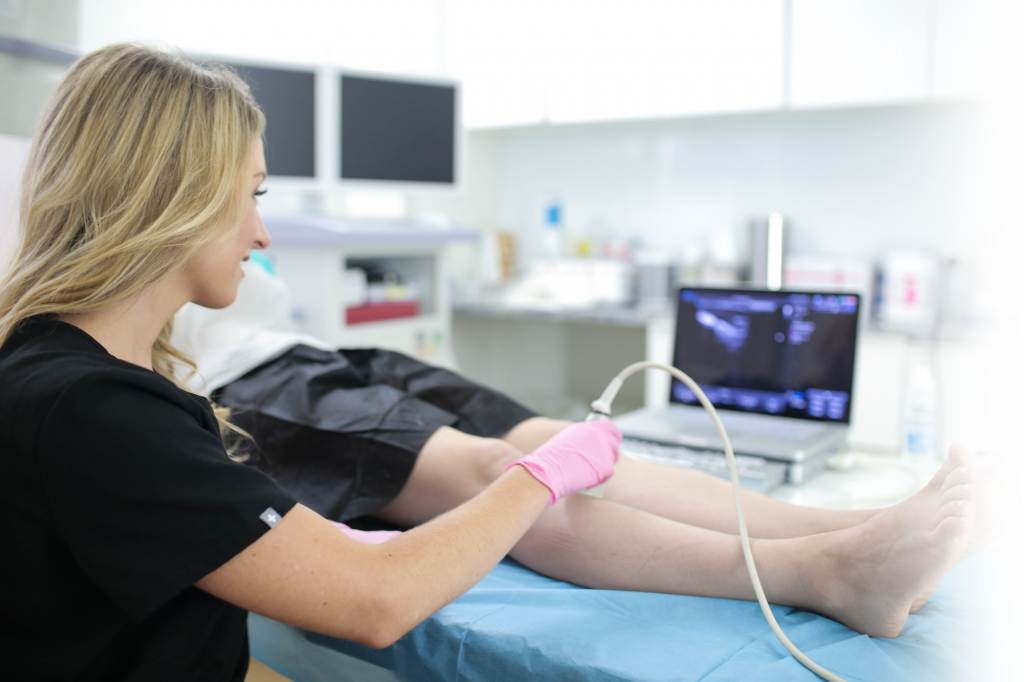What to Expect During and After Vein Treatment
What to Expect Before Vein Treatment
Before you have vein treatment, you’ll have an initial consultation to discuss potential treatment plans. Your vein doctor will analyze your veins and conduct an exam. They’ll also inquire about your medical history, especially your history with blood clots or deep vein thrombosis. If needed, the vein specialist will conduct additional tests. They might suggest lab work or a vein mapping procedure to identify any problems with circulation. The initial consultation doesn’t have to take long, but our vein doctors will make sure all your questions are answered. Book an appointment with our New Jersey vein specialists today to discuss your treatment options.
On the day of your treatment, there’s very little prep involved. Since minimally invasive procedures don’t require general anesthesia, you don’t have to stop eating or drinking beforehand. Your vein doctor might even suggest extra hydration in the days leading up to your treatment, since hydration makes veins more visible. Your vein specialist might ask you to stop taking certain medications like aspirin, ibuprofen, or blood thinners the morning of treatment. Don’t change your medication schedule without your doctor’s recommendation. Most patients can wear their own clothing during treatment, depending on the vein’s location. It helps to wear loose clothing that the vein doctor can move around when administering treatment. You do not need to come to the appointment any earlier than specified since there’s no surgical prep involved.
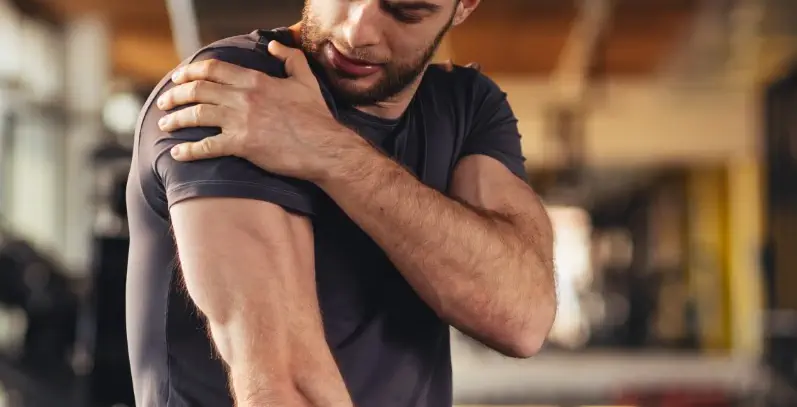
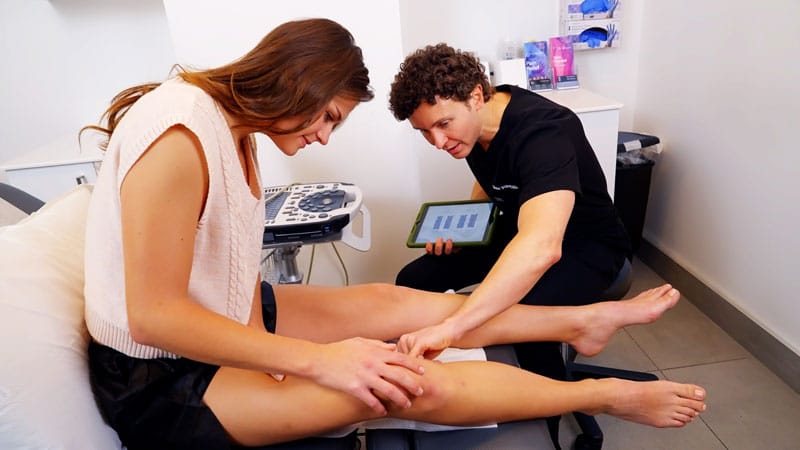
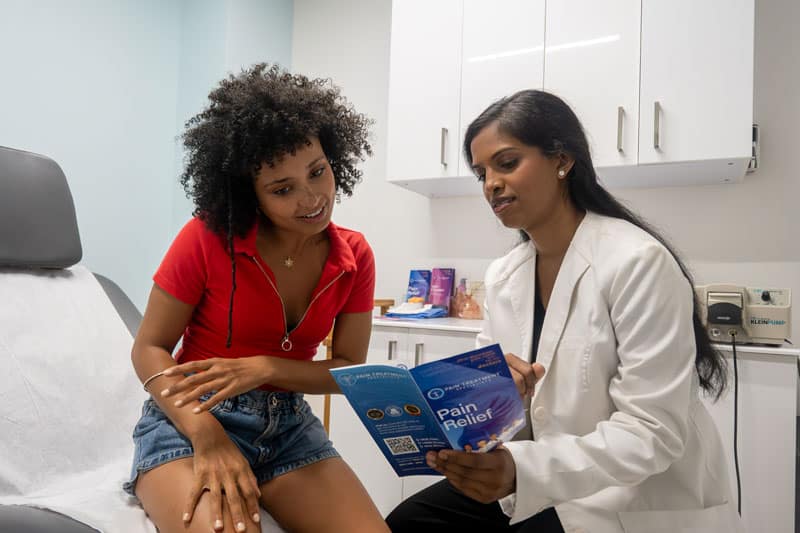
What to Expect During Spider or Varicose Vein Treatment
Once you get to the treatment room, you’ll relax in a reclined position with your leg elevated, if the doctor is treating a leg vein. The vein specialist will cleanse the treatment area and apply a topical numbing cream if needed. They’ll then locate the vein to be treated either visually or with ultrasound guidance. Once the area is cleansed and numbed, they’ll insert a tiny catheter or needle into the defective vein.
If you’re having a thermal procedure, like radiofrequency ablation, the vein doctor will inject tumescent anesthesia around the vein to protect the area from heat. Then, they’ll activate a small device with radiofrequency to heat the vein and cauterize it. If you’re having a non-thermal treatment, no local anesthetics are required. For sclerotherapy, they’ll inject a sclerosant into the vein. This irritates the vein’s walls which creates scar tissue that closes the vein. For mechanochemical ablation, they’ll inject a sclerosant and also rotate the catheter through which the sclerosant is delivered. This dual approach ensures the vein walls are disrupted enough to collapse. For vein adhesives, they’ll inject cyanoacrylate glue into the vein to seal it shut.
What to Expect After Vein Treatment
After minimally invasive vein treatment, you can walk around right away. Most patients can drive themselves to and from their appointment since general anesthesia and large incisions aren’t used. Some patients will need to wear compression stockings for 48 hours after treatment. This depends on the type of treatment and the patient’s vascular health and medical history. If you have compression stockings, you should still be able to follow your usual routine and perform moderate exercise with your doctor’s permission. Most people can remove their compression stockings to bathe or shower after the first day or two.
There are no large wounds to manage, and you won’t need downtime to recover. Our patients often seek treatment during work and then resume their schedule since our appointments take 15 to 30 minutes on average. You won’t need to take time off work unless you want to. Our injections use tiny incisions that don’t require obvious bandaging or stitches, so your treatment is discreet. Many patients have no discomfort or visible effects from treatment. But it’s not abnormal to have a bit of redness, bruising, mild swelling, or discomfort near the treated area for a day or two. Patients who bruise easily might have longer-lasting bruises. Some patients will feel a temporary hardening sensation when the vein closes. Most patients will see a significant difference in both the damaged vein and the treated area within a week. It will take a few weeks for the vein to fade. If you have larger veins, it could take a few months for full resolution.
Vein treatment is very safe, and serious complications are rare. But if you develop any of these symptoms, call your doctor: red streaks on the skin, puss, worsening pain, bleeding, or sudden redness accompanied by warmth and swelling. If you have chest pain or shortness of breath, go to the emergency room. This could indicate a pulmonary embolism, which is when a blood clot in a deep vein breaks loose and travels to the lung. This is exceedingly rare, and the best way to avoid it is to choose a vein doctor with ultrasound training. These vein specialists can look for existing blood clots before treatment.
What to Expect About Follow-Up Treatment Plans
Many patients only need a single vein treatment to resolve their issues. Some patients will need multiple treatments if they have several veins to treat. If you have large, complicated veins, your vein doctor might recommend a combination of treatment methods to get the best results. For instance, they might use radiofrequency ablation to close off a large varicose vein, and sclerotherapy to close spider veins branching out from it. But all of these treatments are quick, outpatient, and easy to fit in your schedule.
Whether you need one treatment or multiple treatments, it’s important to choose a board certified vein doctor who uses FDA-approved treatments and accepts insurance. Many patients acquire full coverage for their vein care when they choose a qualified vein center. Our insurance specialists submit paperwork on your behalf and guarantee coverage before your appointment. This ensures that your spider or varicose vein treatment is not only quick, gentle, and effective, but it’s also affordable. Contact us today for free insurance verification. We look forward to meeting you and discussing your treatment options!

